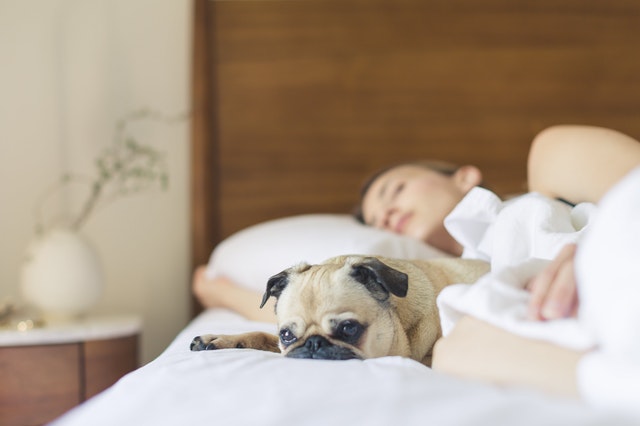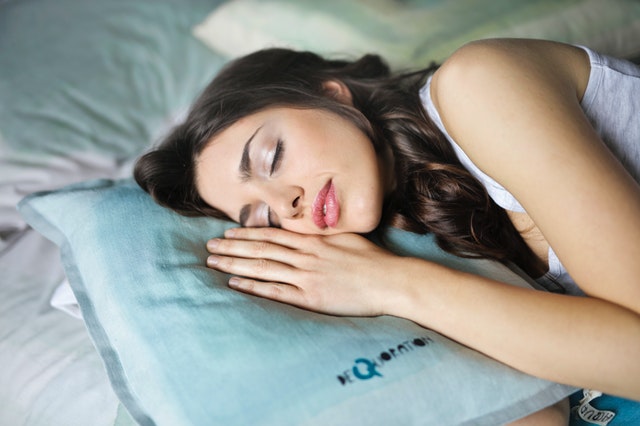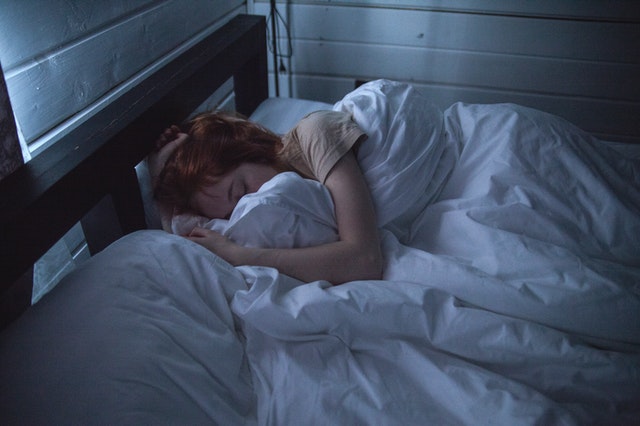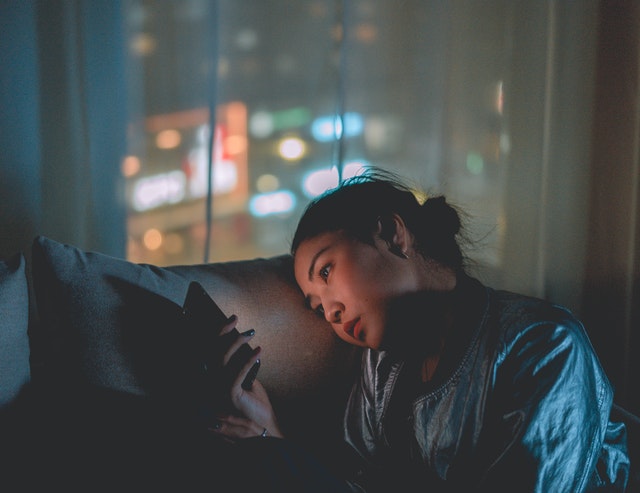
Written by Hannah Cox, Guest Writer
You may have heard that you should avoid bright lights before bed. While this is good advice, it turns out that some colors of light may disrupt your sleep more than others.
Your body natural sleep-wake cycles are largely controlled by a hormone called melatonin. Specialized photoreceptors in your eyes send information back to your brain and influence your production of melatonin.
According to a 2017 review of studies, research has found that these receptors are most sensitive to light with wavelengths around 450 to 480 nanometers (nm). To most people, this light appears blue.
There’s still a limited amount of research looking at the effects of other light colors on our sleep cycles. However, there’s some evidence that warm colors may help lull you to sleep more quickly than cool colors.
Let’s take a look at which colors have the potential to lull you to sleep the quickest and which might have you tossing and turning all night.

Colors that may help you sleep
Up until now, most studies examining the best types of lights to stimulate sleep have been performed on rodents. However, because rodents are nocturnal and color-blind, it’s hard to draw conclusions from these studies.
Limited research of humans has suggested some evidence that red light may help stimulate sleep. There’s also some evidence that individual preference may also play a role.
Since pink light is made up of a combination of red and purple light waves, it could also be beneficial — in theory. However, there’s no research backing the claim at this time.
Red light
It’s thought that colors close to red on the light spectrum might stimulate melatonin production. However, at this time, more research is needed to support this theory.
A small study from 2012 examined the effect of 30 minutes of nighttime red light therapy in a group of 20 female basketball players.
The researchers found that after 14 days, participants who received light therapy improved their sleep quality and melatonin levels significantly compared to participants not exposed to any light.
One 2017 study on mice found that red light at an intensity of 10 lux or higher had the potential to induce sleep. The researchers noted that light under 10 lux had no effect.
Check out this guide for more information about Red Light Therapy For Sleep.

Individual differences
Another 2017 study found evidence that individual taste may also play a role in determining which color light is best for inducing sleep. In the study, researchers ran two different experiments.
In the first experiment, participants were exposed to white light, a random color, or their self-selected preferred color. The researchers observed that participants exposed to their preferred light color fell asleep significantly quicker.
|
Color |
Time to fall asleep |
|
white |
18.8 minutes |
|
random nonpreferred color |
18.1 minutes |
|
preferred color |
11.8 minutes |
In the second experiment, the researchers also included a group that was only exposed to darkness.
Once again, the researchers found that the group exposed to their preferred color fell asleep significantly quicker than participants in the other groups.
|
Color |
Time to fall asleep |
|
white |
21.2 minutes |
|
darkness |
21.1 minutes |
|
random nonpreferred color |
16.8 minutes |
|
preferred color |
12.3 minutes |

Worst colors to light up a room for sleep
It’s well-documented that exposure to blue light can negatively impact your sleep quality. Electronic screens, LED lights, and fluorescent lights can all contain blue light.
One small older study from 1991 and one 2016 study on mice found evidence that green light could also negatively impact melatonin levels.
The same 2016 study found that violet light could have a similar effect as blue light. However, there’s been no research on the effect of violet light in humans.
What bedroom factors may help you sleep better
Many factors can impact the quality of your sleep. Here are some tips to help you sleep better.
Habits to minimize:
- exposure to electronic screens, such as phones or television, before bed
- ingesting caffeine late in the day
- drinking too much water before bed
- consuming alcohol
- going to bed and waking at irregular times
- long naps during the day
Habits that may improve sleep:
- exposing yourself to bright light during the day
- exercising regularly
- sleeping on a comfortable mattress and pillow
- having a quiet sleeping area
- doing something relaxing before bed
- keeping your room at a comfortable temperature
Takeaway
There’s some evidence that red light may induce sleepiness. However, more human research is needed to back this theory.
It’s well-documented that blue light can have a negative impact on your melatonin levels.
Exposure to green and purple light could also potentially hinder your ability to fall asleep, but more research is needed to fully understand their effects.





Leave a reply